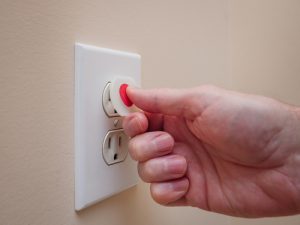 Is Baby Proofing Your Home Really Necessary?
Is Baby Proofing Your Home Really Necessary?
The question of whether or not baby proofing your home is necessary may be a tricky one. While it may seem like a lot of work, there are plenty of simple ways to keep your house safe for the little ones that are coming to join your family soon. It starts with taking the time to look over your home in an individualized way and considering things that are potentially dangerous to babies. Remove items that can be a choking hazard, and lock away any cleaning supplies, medications or other potentially poisonous substances.
Baby Gates
Baby gates are a great way to keep kids safe around the home. They’re especially useful once children start crawling, as they can help prevent injuries in areas like stairways or between rooms. But there’s a lot to consider when choosing the best baby gate for your family’s needs, from aesthetics to mounting and pass-through options. For example, if you’re going to be using the baby gate on stairs, it’s important to choose a model that’s either hard-mounted or pressure-mounted for safety. Also, if you want to be able to move the gate to different areas, choose a model that folds or collapses for easy transport.
Outlets
Outlets are a surprisingly large source of danger for tykes, especially since they’re typically low to the ground and at eye level. Crawling and cruising tots can get their hands all over them and insert anything into the slots, including fingers, toy wires, and even small objects like hairpins. To avoid this, you can install child-proof outlet covers that plug into or go over the outlets themselves. These plastic caps are a simple but effective fix.
Cabinets
Cabinets and storage spaces can be one of the first areas where a baby or child gets a little too curious. Medications, personal care items, kitchen tools, cleaning products and even knives can be found in cabinets and drawers, which is why they are an important place for baby proofing. Fortunately, there are a variety of ways to secure your cabinets and keep them safe from curious hands. Magnetic locks, adhesive straps, spring action locks and slide locks all work well for this purpose.
Houseplants
Houseplants are a great way to bring the outside inside and brighten up your space. They also offer a fun opportunity for your kiddos to learn more about nature and science. However, some plants can be harmful to kids and pets if they ingest them. This is particularly true for certain popular houseplants, including pothos, peace lily and caladium plants. In addition, these houseplants can also be a choking hazard for toddlers who may try to pull off leaves or smaller pieces of the plant. This can cause serious injury or death. The best way to prevent a child from ingesting a houseplant is to remove it. You can also protect the plants with cling wrap or plastic drip trays.
Window Treatments
Window coverings, blinds, shades and curtains are often overlooked when it comes to baby proofing your home. But these furnishings are actually a serious child safety concern, as research has shown that more than one kid a month dies from being strangled in cords from window blinds and shades. The best solution is to replace your existing window treatments with safe, cordless options that are Certified Best for Kids. These treatments are designed with safety in mind and feature a child-safe cordless lift control or a cleat to keep cords out of reach.
Furniture
When babies start to crawl and gain independence, they can move very quickly. This is an exciting time for parents, but it can also be dangerous if they don’t keep their eyes on them at all times. Regardless of how careful you are, a baby can still fall and get hurt. The most common type of injury is from the sharp edges and corners of furniture. Luckily, there are ways to make your furniture soft and safe for your child. You can buy corner guards at your local store or do the DIY route with a roll of foam cushioning that you cut to fit around edges and corners.

